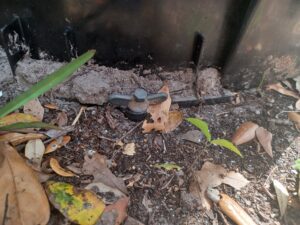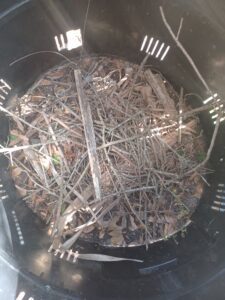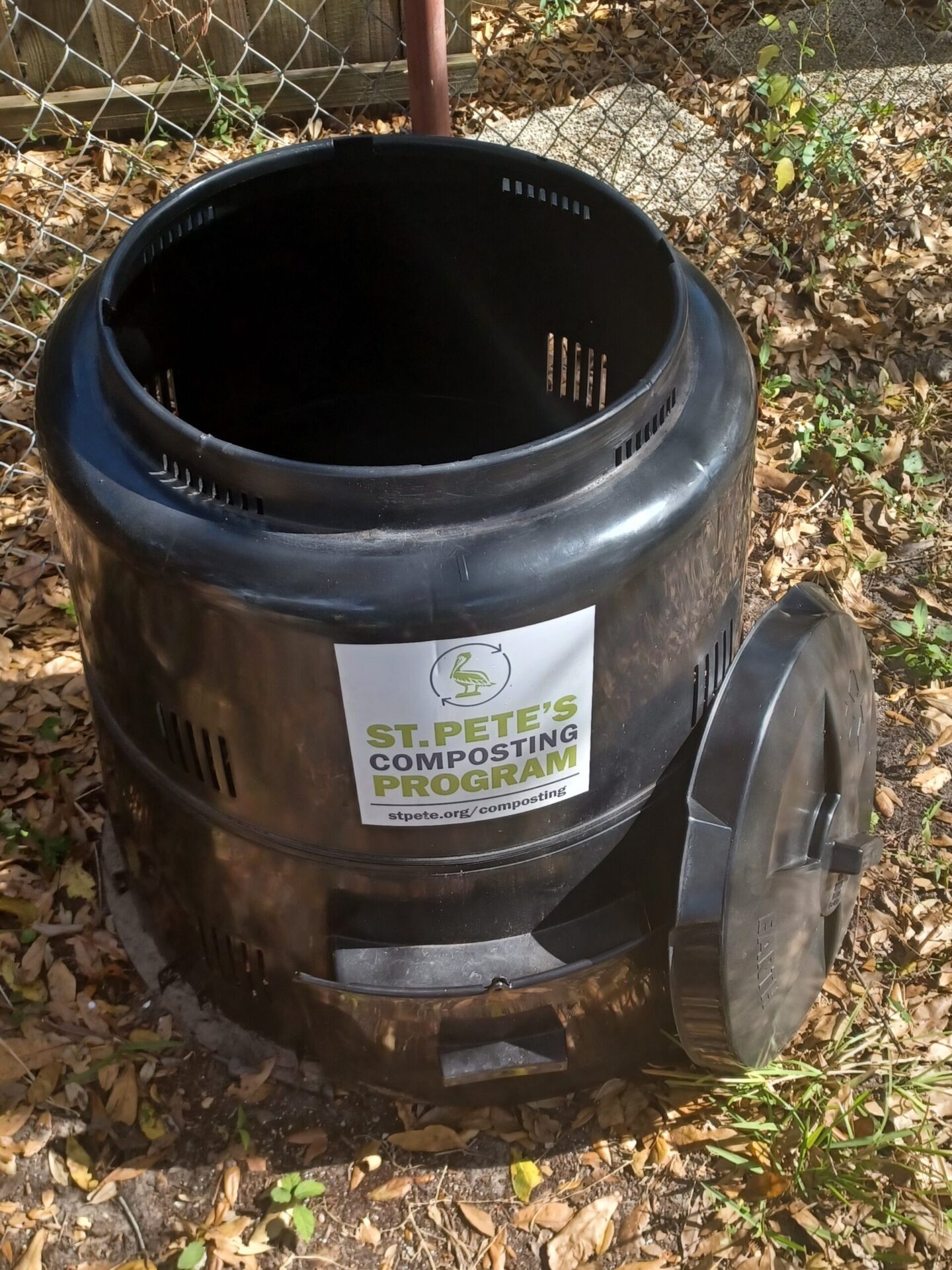For years I have thrown food scraps outside to feed the animals and to decompose naturally. Throwing natural items in the trash always felt weird to me when bugs and critters could get nourishment from them. Since beginning my internship at American Sustainability, I have begun to see ways I could improve my existing habits. That is why I started researching how to compost at home. There are so many resources on how to build a compost bin, the different types of composting, and how-to instructions.
After researching how to build my own compost bin, I found out that the city of Saint Petersburg in Florida has a sustainability department that provides resources and information to residents looking to be more sustainable. This link will take you to the sustainability and resilience website. Unfortunately, the city postponed the compost program until spring, but my friend and local artist John Gascot let me use his compost bin in the meantime.
Installing the compost bin is easy. Find a place to put it and screw the supports into the ground. From there, you fill it with material, and you are on your way. There is no effortless way to turn the pile with this in, so I will test a few methods. In general, this is how it goes for this compost bin:
- Find the best location for your bin.
- Fill the bottom with sticks to create a layer of oxygen.
- Layer it with green items first.
- Follow the green items with brown.
- Dampen to wrung out cloth.
- Stir or flip every few weeks.
You can combine steps 3, 4, and 5 in a separate space, like a wheelbarrow, before adding to the compost bin.
Green items are:
- Kitchen scraps, like fruits and vegetables
- Grass and plant clippings
- Eggshells

- Coffee and tea grounds with or without the filter
Brown items are:
- Dead leaves and yard trimmings
- Nuts and shells
- Shredded paper and cardboard
- Hair
Who knew having your mom give you a haircut at home was sustainable in more than one way?
You should not add animal products or byproducts (yes, poop), diseased vegetation, ash from charcoal or other chemically treated woods, or other hazardous material. This compost will be used for my food, and I don’t want to risk killing my plants or poisoning my food. Issues that may occur are a smell emanating from the compost, which can be fixed by stirring/flipping it. If this doesn’t work, stir in some brown material. Compost bins should be warm to help with the process. If it is less than 110 degrees, try stirring it and adding more green material and/or water.
Check back later to see me use my compost to regrow common kitchen produce. And below are two resources I’ve used to help. One is the Saint Petersburg Composting Guide, and the other is a University of Florida website on composting methods.
References
Communications, I. F. A. S. (n.d.). Build a Pile. Build a Compost Pile – UF/IFAS Extension. Retrieved February 10, 2023, from https://sfyl.ifas.ufl.edu/sarasota/natural-resources/waste-reduction/composting/what-is-composting/build-a-compost-pile/
Slingerland, L. (n.d.). St. Petersburg’s Composting Program. Retrieved February 10, 2023, from https://cms5.revize.com/revize/stpete/Residents/utility_services/trash_recycling/docs/V2_Composting%20Guide.pdf
